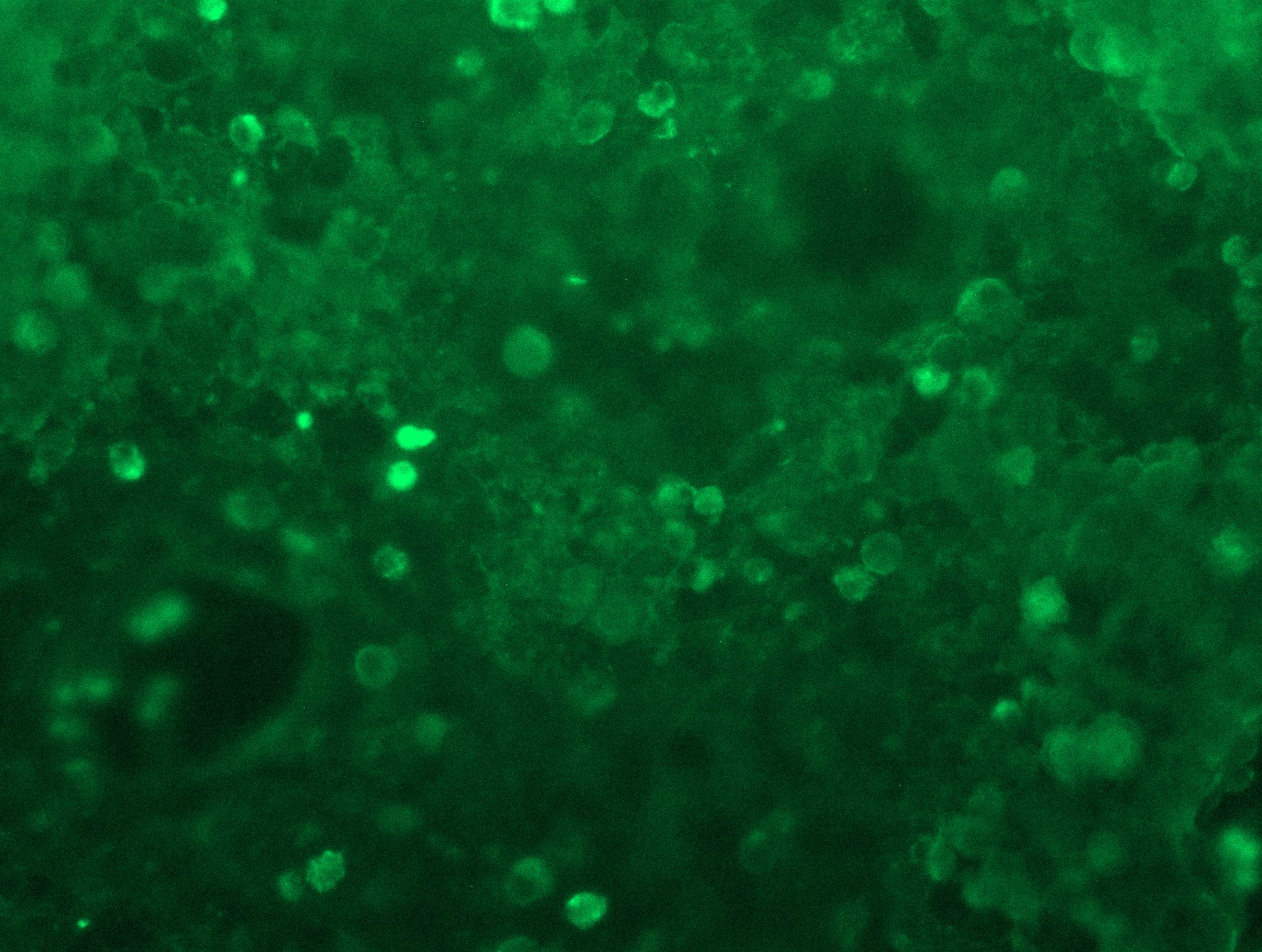Smpd3 (NM_021491) Mouse Tagged ORF Clone Lentiviral Particle
CAT#: MR209795L3V
- LentiORF®
-

Lenti ORF particles, Smpd3 (Myc-DDK-tagged) - Mouse sphingomyelin phosphodiesterase 3, neutral (Smpd3), 200ul, >10^7 TU/mL
Lentiviral Particles: mGFP w/ Puro
Interest in protein/lysate? Submit request here!
Buy this product and get 50% off on the Lenti RapidTiter kit. Use Code: Rapid50
USD 365.00
Specifications
| Product Data | |
| Type | Mouse Tagged ORF Clone |
| Tag | Myc-DDK |
| Symbol | Smpd3 |
| Synonyms | 4631433G07Rik; AI427456; AW537966; fro; nSMase2 |
| Mammalian Cell Selection | Puromycin |
| Vector | pLenti-C-Myc-DDK-P2A-Puro |
| ACCN | NM_021491 |
| ORF Size | 1965 bp |
| Sequence Data |
The ORF insert of this clone is exactly the same as(MR209795).
|
| OTI Disclaimer | The molecular sequence of this clone aligns with the gene accession number as a point of reference only. However, individual transcript sequences of the same gene can differ through naturally occurring variations (e.g. polymorphisms), each with its own valid existence. This clone is substantially in agreement with the reference, but a complete review of all prevailing variants is recommended prior to use. More info |
| OTI Annotation | This clone was engineered to express the complete ORF with an expression tag. Expression varies depending on the nature of the gene. |
| Reference Data | |
| RefSeq | NM_021491.3 |
| RefSeq Size | 5148 bp |
| RefSeq ORF | 1968 bp |
| Locus ID | 58994 |
| UniProt ID | Q9JJY3 |
| Cytogenetics | 8 D3 |
| Gene Summary | Catalyzes the hydrolysis of sphingomyelin to form ceramide and phosphocholine. Ceramide mediates numerous cellular functions, such as apoptosis and growth arrest, and is capable of regulating these 2 cellular events independently. Also hydrolyzes sphingosylphosphocholine. Regulates the cell cycle by acting as a growth suppressor in confluent cells. Acts as a regulator of postnatal development and participates in bone and dentin mineralization. Overexpression enhances cell death, suggesting that it may be involved in apoptosis control.[UniProtKB/Swiss-Prot Function] |
Documents
| Product Manuals |
| FAQs |
| SDS |
Resources
{0} Product Review(s)
Be the first one to submit a review






























































































































































































































































 Germany
Germany
 Japan
Japan
 United Kingdom
United Kingdom
 China
China


